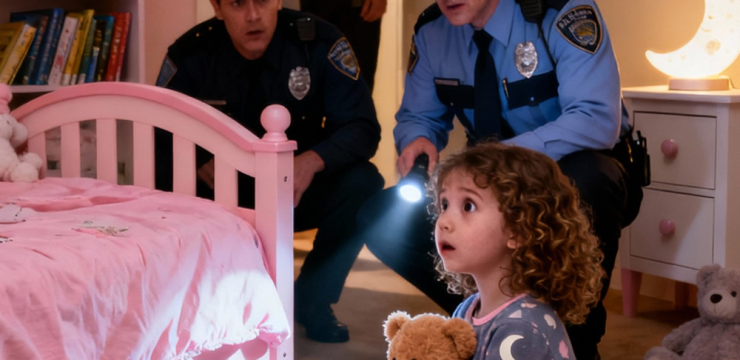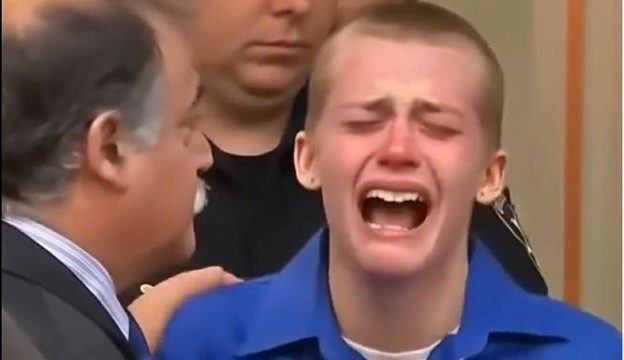Do you enjoy testing your attention to detail? If so, this picture puzzle is right up your alley! It features an ordinary street scene, complete with traffic signs, cars, and pedestrians. But something about it isn’t quite right. At first glance, everything appears normal, but a closer look reveals a hidden error. Are you ready to put your observation skills to the test? Let’s dive in!

Analyzing the Picture: The Street Puzzle
The image shows a typical street scene with lanes, traffic signs, cars, and pedestrians. But remember, this is a puzzle designed to challenge your attention to detail. Somewhere in the picture, a subtle mistake is waiting to be found. To solve it, you’ll need to carefully examine each element.
Step 1: Focus on Road Markings and Signs
Start by observing the road markings and traffic signs. At first, everything seems correct: there are three lanes, each with an arrow indicating the allowed direction:
- The left lane has an arrow for left turns.
- The middle lane has an arrow for going straight.
- The right lane has an arrow for right turns.
These markings seem typical for a busy street. But here’s where things get interesting—take a closer look at the right-turn lane.
Step 2: Spotting the Right-Turn Issue
Now, focus on the right-turn lane and its corresponding sign. The sign clearly indicates that vehicles in this lane can turn right. But wait! If you trace the direction of the right-turn arrow, you’ll notice it points directly toward a curb and some greenery.
Instead of leading to a road, the arrow points to a dead end. In other words, the street layout doesn’t support a right turn, despite what the sign suggests. This misleading sign creates the core inconsistency of the puzzle.
Common Mistakes When Solving Visual Puzzles
Even the most observant people can struggle with puzzles like this. Here are some common pitfalls that make finding the mistake more challenging:
- Focusing Only on Main Elements Our brains tend to focus on the most prominent parts of an image, such as vehicles, pedestrians, or bold traffic signs. But in this puzzle, the mistake lies in the interaction between the sign and the road layout. To solve it, you need to look at how these elements connect—or in this case, don’t connect.
- Overlooking Background Details Important clues are often hidden in the background. While most people focus on the cars and pedestrians, the road layout and markings are just as important. In this puzzle, the error lies in the misalignment of the road and the signs, which causes confusion.
- Making Assumptions Based on Logic Our brains naturally make logical assumptions, especially when looking at familiar scenes like streets. We expect to see a road where a right-turn sign suggests one exists. But this puzzle challenges that assumption, making it tough to spot the error without questioning what seems obvious.
Solving the Puzzle: Finding the Mistake
The solution to this puzzle involves identifying the misleading right-turn sign. Here’s a step-by-step breakdown:
- Look closely at the right-most lane’s arrow, which directs traffic toward a curb.
- Notice that there’s no road to accommodate the right turn, despite the sign indicating that turning right is an option.
- Identify the contradiction: The sign suggests a right turn, but there’s no road to follow, making the sign itself the error.
The absence of a corresponding road for the right-turn arrow is the hidden mistake. It’s a small detail, but it disrupts the logic of the street, making it the subtle error in the image.
Tips to Improve Your Observation Skills
If you had trouble spotting the mistake, don’t worry—there are ways to sharpen your observation skills. Here are some tips:
- Practice Regularly The more you practice finding differences, the better you’ll become at noticing subtle details. Try similar puzzles or look for differences in real-life scenes to boost your skills.
- Slow Down Take your time when analyzing images or scenes. Rushing can cause you to miss crucial details, like the missing road in this puzzle.
- Change Your Perspective Sometimes, looking at a puzzle from a different angle or distance can help reveal hidden details. Don’t be afraid to adjust your view and rethink your assumptions.
Conclusion: Did You Spot the Mistake?
Were you able to identify the missing road on your own? If so, congratulations! If not, don’t feel discouraged—this puzzle was meant to be tricky. It’s a great reminder that details matter and that things aren’t always as they seem. Next time you encounter a “spot the difference” puzzle, remember to slow down, question what you see, and have fun with the challenge. After all, puzzles like this one aren’t just games; they’re a fun way to improve your observation skills and the way you perceive the world.





